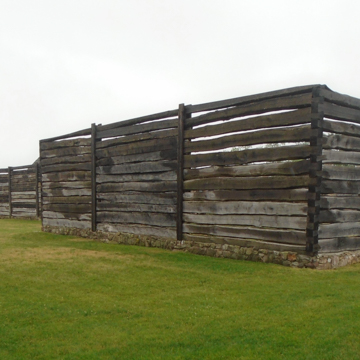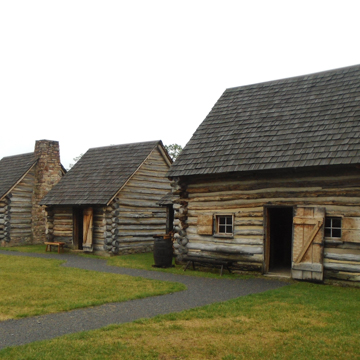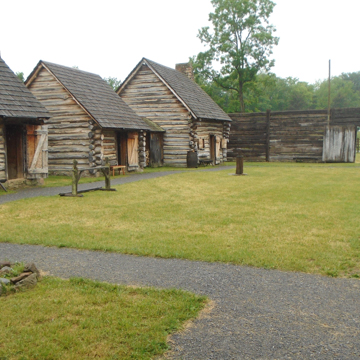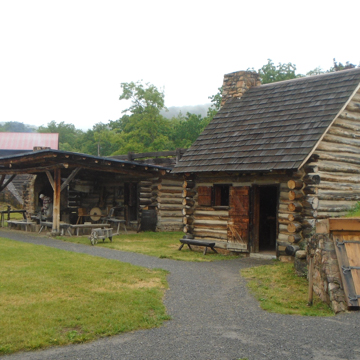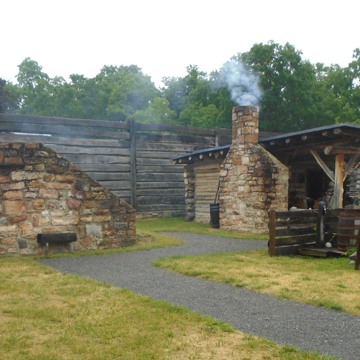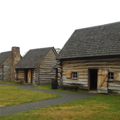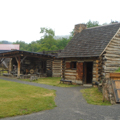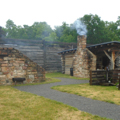Fort Roberdeau was built in 1778 to protect the miners and local farm families who were supplying George Washington's troops with lead, from attack by the British and their Native American allies. During the Revolutionary War, lead for bullets was at a premium, so Philadelphian Brigadier General Daniel Roberdeau traveled to Sinking Valley, at his own expense, to mine and smelt the lead needed by the new nation. Rangers patrolling the frontier were also garrisoned here from 1778 to 1782. The place name points to the valley's creek that disappears into a sink hole and then reappears at Arch Spring, thus the names Sinking Run and Sinking Valley.
The fort is built with the logs of its outer walls stacked horizontally from the ground up between vertical posts because bedrock in the valley is close to the surface. The fort fell into disuse by the nineteenth century, and its parts were reused or left to decay. In the late 1930s, under the Works Progress Administration and the National Youth Administration, the fort was excavated and the footer laid for reconstruction using the archaeological and documentary evidence available. In 1976, to honor the nation's bicentennial, the stockade and six of the log cabins within its walls were rebuilt. Forty-seven acres of land surrounding the fort provide nature trails and enhance its rural atmosphere. A group of supporters continues to accrue land around the property, including a timber-frame, Pennsylvania bank barn of 1858 and a white frame farmhouse c. 1866. White Oak Hall, a simple board-and-batten structure with a gable roof, was built between 1989 and 1991 on a hillside overlooking the fort to provide space for educational programming.


